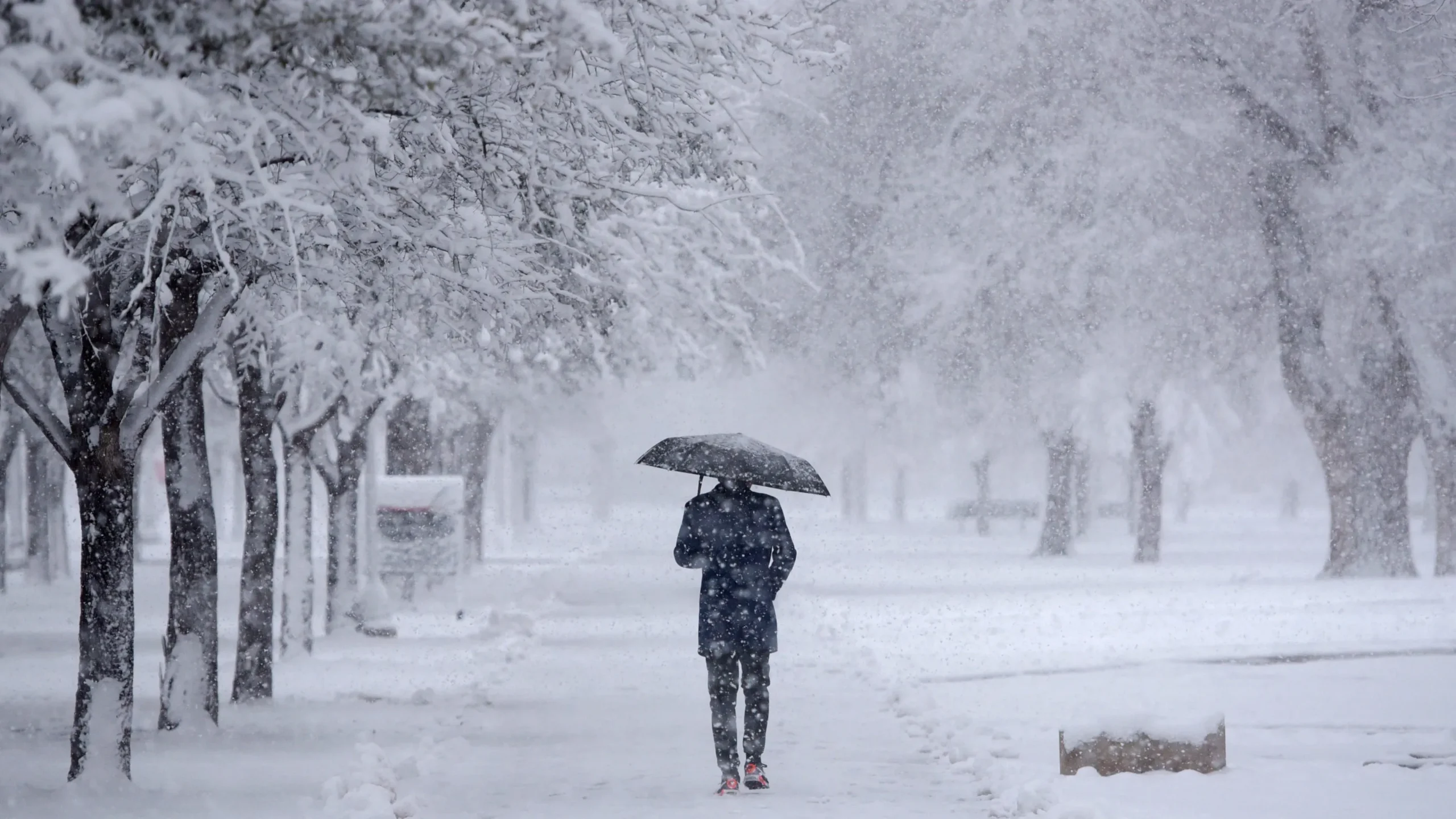Learn what to do when a winter storm warning is issued. Discover preparation tips, safety measures, and how to stay safe during severe weather conditions.
Introduction
Winter storms can hit unexpectedly, transforming serene landscapes into dangerous, frigid environments in no time. A winter storm warning is a crucial alert that requires your attention and quick action. This post covers everything you need to know about winter storm warnings, from understanding the terminology to preparing your home and vehicle. If you live in an area prone to winter storms, it’s essential to be proactive. By preparing ahead of time, you can stay safe when harsh weather strikes.
What Is a Winter Storm Warning?
A winter storm warning is issued by weather authorities to inform the public that severe winter weather conditions are imminent or already occurring in a specific area. These warnings typically signal the presence of dangerous conditions such as heavy snow, sleet, freezing rain, or blizzards. The warning is given when the weather system is predicted to produce significant impacts within a specified timeframe. These warnings often follow other alerts, like winter storm watches, but indicate that the event is much closer.
The conditions associated with a winter storm warning can be life-threatening, particularly when the storm produces freezing rain or heavy snow, both of which can disrupt transportation and lead to power outages. It’s essential to take immediate action when this type of warning is issued.
Recognizing the Different Winter Weather Warnings
Before a winter storm warning is issued, there are a few other warnings you may hear about, which help to indicate the severity of the storm. These include winter weather advisories, winter storm watches, and blizzard warnings. Understanding these differences can help you prepare in the most appropriate way.
For example, a winter weather advisory means that the expected conditions could cause inconvenience, but the storm isn’t expected to be as severe. On the other hand, a winter storm watch indicates that conditions are favorable for a winter storm but hasn’t yet been confirmed. Once a winter storm warning is issued, it means that the storm is imminent or already occurring, and severe conditions are expected to follow. By staying informed, you can better respond to the situation.
The Danger of Winter Storms
When a winter storm warning is issued, it’s not just about the snow or cold temperatures—it’s about the significant dangers posed by these conditions. The heavy snow and ice that often accompany a winter storm can accumulate rapidly, causing dangerous road conditions, limited visibility, and even structural damage. Power outages are also common, particularly when ice builds up on power lines and tree branches. The risk of hypothermia and frostbite increases during these storms, making it crucial to stay warm and limit exposure to the elements.
Understanding these risks is essential for making the right decisions before, during, and after a winter storm. You should be aware of the types of hazards present in a winter storm warning and plan accordingly to minimize your exposure.
Preparing Your Home for a Winter Storm
The key to surviving a winter storm warning is preparation. If you know a winter storm is on its way, it’s important to ensure your home is ready to withstand the harsh weather. Start by checking that all doors and windows are properly sealed to prevent drafts. You should also ensure that your home heating system is working properly and that you have a backup plan, like a space heater or generator, in case of power outages.
Additionally, stock up on emergency supplies, including non-perishable food, bottled water, batteries, blankets, flashlights, and a first aid kit. If you live in a place where snow and ice accumulation can be severe, you might want to have a snow shovel, salt, and a roof rake handy to clear walkways and your roof after the storm.

Preparing Your Vehicle for a Winter Storm
In addition to preparing your home, you must also prepare your vehicle for a winter storm warning. If you must travel during a winter storm, it’s critical to ensure your vehicle is in top condition. Start by checking the battery, tires, and antifreeze levels. Make sure you have a full tank of gas, as it’s safer to drive in the storm if you don’t run out of fuel.
Pack an emergency kit in your car, including blankets, food, water, a flashlight, and a portable phone charger. Having a shovel and some sand or salt in your trunk can also be helpful in case you get stuck in snow or ice. Finally, before heading out, make sure to check road conditions and avoid unnecessary travel during a winter storm warning if possible.
How to Stay Safe During a Winter Storm
When a winter storm warning is issued, your safety should be your top priority. The best advice is to stay indoors as much as possible during the storm. If you must go outside, make sure to bundle up in layers to protect yourself from the cold. Pay close attention to wind chill warnings, as cold temperatures combined with wind can increase your risk of frostbite and hypothermia.
Limit your time outdoors, and avoid tasks like shoveling snow or walking long distances. Always be cautious of icy sidewalks and roads. If you must drive, proceed with extreme caution, and remember that even well-plowed roads can be icy.
The Importance of Keeping Informed
To properly respond to a winter storm warning, it’s crucial to stay informed throughout the storm’s duration. Check local news, weather apps, or listen to a NOAA Weather Radio for updates. Knowing when the storm is expected to peak or subside will help you plan your actions. It’s also wise to monitor the power grid in your area, as power outages are common during winter storms.
Additionally, if you lose power, avoid using candles as they pose a fire risk. Instead, use battery-operated lights and ensure that your heating sources are safe. Keep a phone nearby and charged, as communication is vital during a winter storm warning.
Protecting Your Pets During a Winter Storm
Pets are just as vulnerable as humans during a winter storm warning. If the storm includes freezing rain or snow, it’s important to keep your pets indoors. Do not let them roam outside unless it’s absolutely necessary. Even short walks in subzero temperatures can be dangerous for your pet.
Make sure your pets have a warm place to sleep, and ensure that they have plenty of food and water. If your pet must go outside to relieve itself, try to limit their exposure to the cold and snow. For outdoor pets, such as those in barns or kennels, ensure they have enough shelter to stay warm.
How to Handle a Power Outage During a Winter Storm
Power outages are one of the most common effects of a winter storm warning, particularly when the storm brings freezing rain or heavy snow. If you lose power, it’s essential to have a plan in place. Start by checking your flashlights, battery-powered radios, and any other emergency supplies you’ve prepared. Ensure that you’re not using gas-powered generators inside your home due to the risk of carbon monoxide poisoning.
If your water supply depends on electricity, keep bottled water available for drinking and hygiene purposes. Try to stay warm by layering clothing, blankets, and wearing hats and gloves. Use your stove only to heat food, not to warm your home, as it can lead to carbon monoxide buildup.

The Aftermath of a Winter Storm
Once the storm passes and the winter storm warning is lifted, you may think the danger has passed—but it’s important to proceed with caution. The roads may still be slippery, and the ice accumulation can make it difficult to clear walkways. Take extra time to shovel snow and use salt or sand on icy patches.
Be cautious when clearing ice from your roof, as large icicles can fall unexpectedly and cause injury. Check on your neighbors, especially the elderly, to ensure they are safe and that their homes have not sustained damage. If you’ve lost power, contact your utility company as soon as possible to report outages and get an estimated restoration time.
Conclusion
Ultimately, when a winter storm warning is issued, preparation is the key to ensuring your safety. From securing your home to preparing your vehicle and staying informed, the more proactive you are, the better equipped you’ll be to handle the storm’s impact. Never underestimate the severity of a winter storm, and always prioritize your safety. By following these guidelines, you can stay safe and weather the storm.
Read also: The stock market today An In-Depth Analysis





